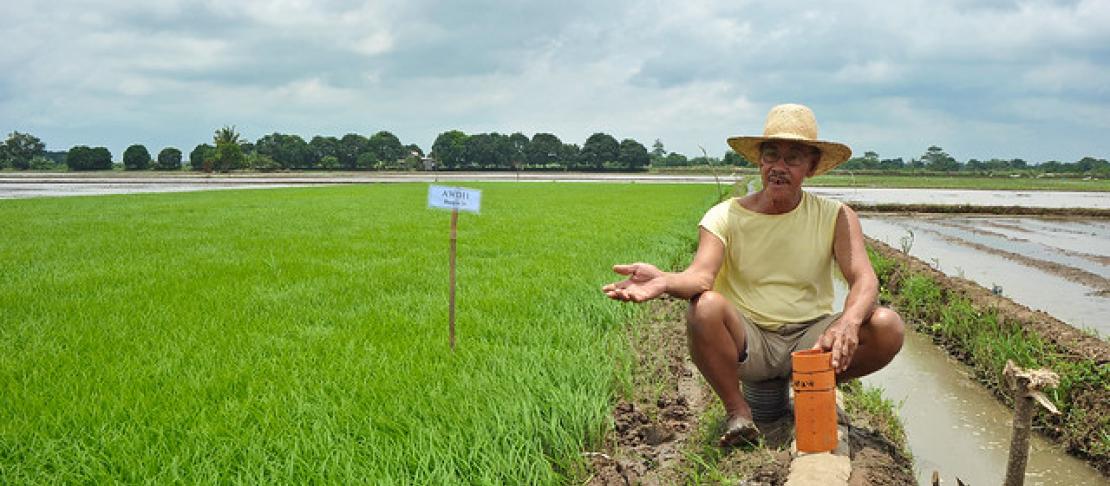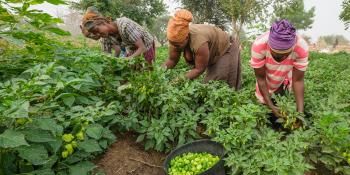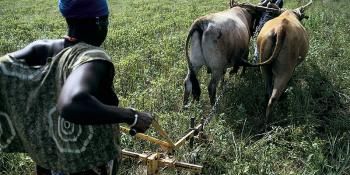Five non-mitigation benefits of alternate wetting and drying

Alternate wetting and drying offers both mitigation and adaptation benefits to the rice sector, which emits large amounts of methane into the atmosphere.
Alternate wetting and drying (AWD) is now accepted as a viable mitigation measure in agriculture. Through this technique, rice farmers can reduce methane emissions, cut their pumping costs and enhance the efficiency of their water use. AWD; however, offers a variety of adaptation options as well. A climate-smart practice that presents both mitigation and adaptation benefits is critical to addressing climate change in rice production.
Adaptation benefits
A paper published by the International Rice Research Institute (IRRI) and the CGIAR Research Program on Climate Change, Agriculture and Food Security in Southeast Asia (CCAFS SEA) detailed five adaptation-related benefits of AWD. These benefits cover production, yield, human health, environment, and socioeconomics.
 Click here to read the publication. |
- Production benefits: AWD reduces the frequency of flooding in the rice farms, which then improves the quality of soil structures. Better soil structures allow farmers to intercrop rice with other agricultural crops. Intercropping leads to diversified farming systems, providing multiple sources of income for the farmers. Aside from crop diversification, they can earn additional income through farm mechanization. With improved soil structures, farm machineries can navigate the farms more efficiently, saving the time and energy of farmers.
- Yield: A proper implementation of AWD can increase the yields of farmers in certain conditions. Studies found that AWD improves soil quality and fertility by helping the soil absorb zinc and nitrogen. It also allows organic nutrients to be reused by the next batches of crops. Meanwhile, in terms of crop health, AWD reduces the incidence of certain pests and diseases, further improving yields.
- Human health: Since AWD reduces the frequency of flooding in rice farms, it gives little chance for mosquitoes and water-borne diseases to fully develop. Moreover, AWD increases the zinc content in grains, which will benefit zinc-deficient people around the world.
- Environment: In Asia, rice production consumes almost half of the water supply, resulting in negative impacts to the environment, such as erosions and runoffs. With AWD decreasing water consumption, rice production can reduce instances of such impacts. Farms that adopt AWD also decompose rice straw better than farms practicing traditional irrigation strategies. It discourages the burning of rice straw, leading to less air pollution and greenhouse gas emissions.
- Socioeconomics: AWD is suitable to communities that suffer from a lack of water supply. In general, this technique is a cheap and practical alternative for poor communities, promoting proper utilization of available water. It poses as a valuable adaptation option for farmers who can hardly rely on rainwater anymore due to climate change.
Typical rice production practices consume too many resources and even contribute to the overall emissions of methane. The challenge for the rice sector now is to utilize available resources while reducing its methane emissions into the atmosphere. Addressing this challenge through alternatives, such as AWD, can be a major boost to climate action in the rice sector, which supplies food for half of the global population.
Read more:
- Blog: New irrigation technique can ease drought effects for rice farmers
- News update: From concept to action: How IRRI supports mitigation plans for rice in Asia
- Publication: The Diverse Benefits of Alternate Wetting and Drying (AWD)
Renz Louie Celeridad is the Junior Communications Specialist for the World Agroforestry Centre (ICRAF) Philippines and Communications Consultant for CCAFS Southeast Asia.



